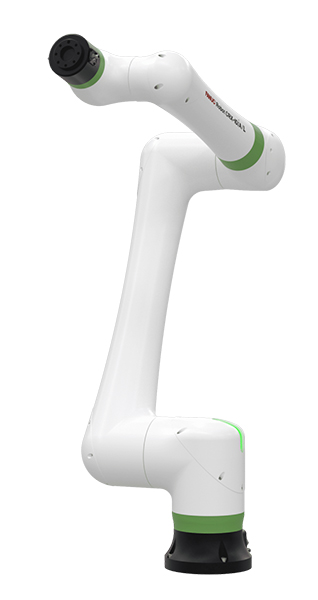Collaborative Robots

When most people in the automation industry hear the term “collaborative robot,” they think of a green FANUC robot. However, this isn’t the only type of collaborative system. Collaborative robots do include those little green robots, however, there is so much more—you might already be taking advantage of collaborative workspaces without even knowing it.
There are four types of collaborative workspaces; some of which don’t even require a dedicated cobot. Read below to learn more about these innovative processes:
SAFETY MONITORED STOPA safety monitored stop is any type of automation system that has one or more sensor detecting a human’s proximity to the robot. When a human is detected within said proximity, the robot stops its operations to eliminate risk for the human to be around. This type of collaborative workspace allows for more movement around the robot, even if the robot does not need the human’s direct assistance in its operation. When the human leaves the area, the robot safely resumes its normal operation with the push of a button.
SPEED AND SEPERATION MONITORING
Speed and separation monitoring is similar to a safety monitored stop, but with more “zones.” When a human enters the warning (yellow) zone, the robot slows to a speed which reduces the risk for the person in the zone. When the human enters the stop zone, the robot stops. Speed and separation monitoring systems are more intuitive than safety monitored stops, because they have a vision system constantly monitoring the position of the human and will automatically resume to normal speeds when safe to do so.
POWER AND FORCE LIMITING
Safety monitored stops and speed and separation monitoring both involve slowing the robot when a human comes too close, but power and force limiting involves modifying the robot itself to reduce risk to interacting humans, allowing the robot to always operate at its full capacity. As these robots are designed to be safely integrated with humans, they have a limited force capacity of 35kg, so they are limited to less demanding systems. These power and force limiting robots are also equipped with other safety features to reduce risk, like not having pinch points, exposed motors, or sharp corners. They can also be padded to reduce impact in case of a collision—and if a collision does happen, there are sensors to detect this and immediately stop operation of the robot.
This type of collaborative robot does not require any type of area scanner or fencing due to its safety features being integrated into the robot.
HAND GUIDING
Hand guiding is typically the reason why most are interested in using collaborative robots. The hand guiding feature that some collaborative robots are equipped with makes programming and reprogramming robots much easier and accessible to more floor workers. Instead of being required to understand a complicated interface, the robot can be hand guided to follow a certain path that the operator gives, and then repeat that motion.
“For some processes, recording the robot’s complete path motion is required. This method applies to applications like sanding or polishing over a complex contour surface when it’s essential to have a smooth path that follows a shape. Hand guiding software is set up to automatically record positions during the robot’s motion, which then accurately plays back the complete path. The operator simply presses and holds the teaching button and then moves the robot along the path. As the robot moves, positions are generated at preset intervals. Once the motion is complete and the button is released, the path is generated in the program. If fine tuning is needed, each position can be individually modified to achieve the perfect path.” From FANUC